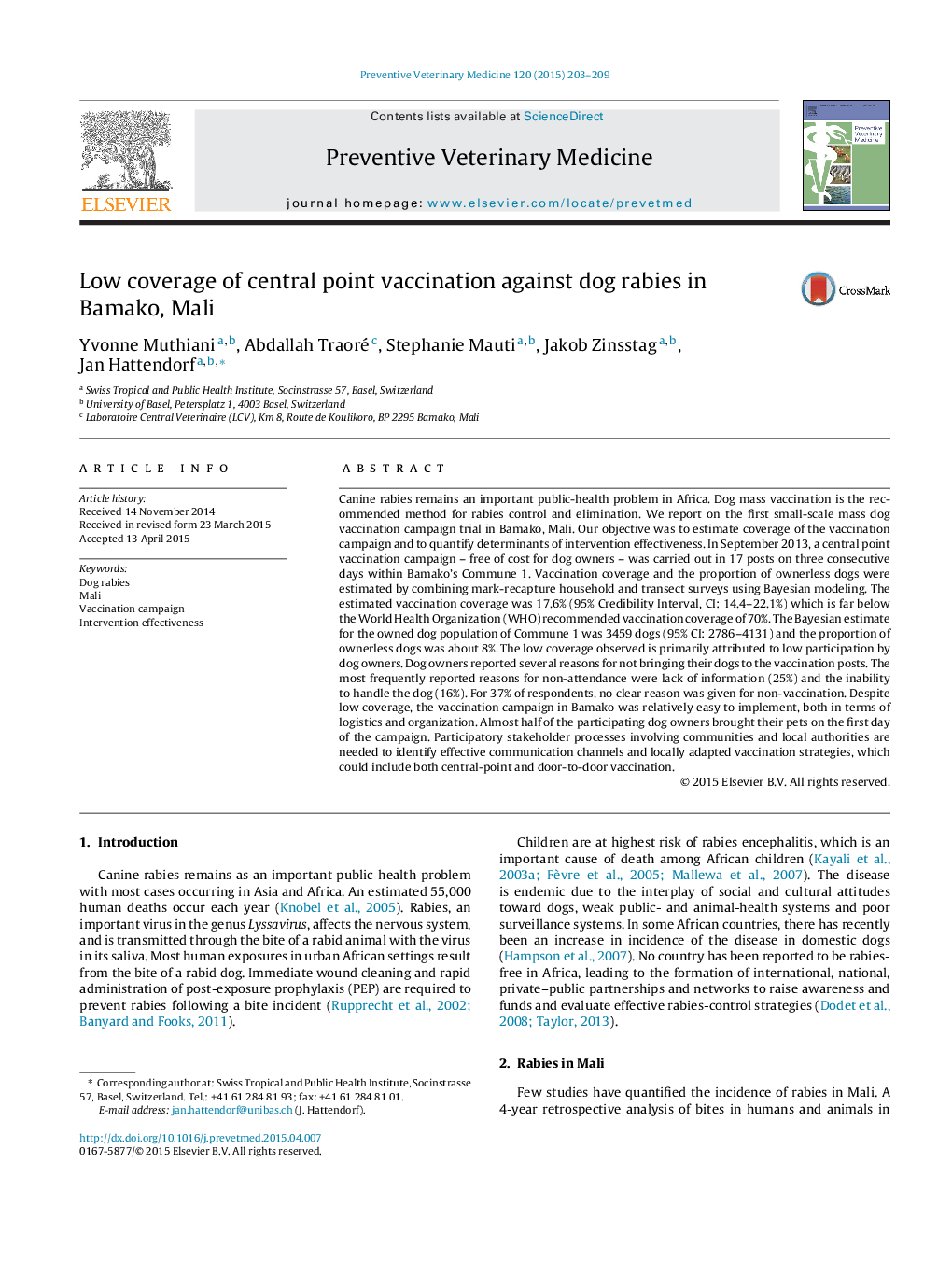| کد مقاله | کد نشریه | سال انتشار | مقاله انگلیسی | نسخه تمام متن |
|---|---|---|---|---|
| 2452392 | 1110002 | 2015 | 7 صفحه PDF | دانلود رایگان |
• The coverage of central point vaccination against dog rabies in Bamako was only 17%.
• We present a new approach determining weak performing key effectiveness determinants.
• The information campaign to raise awareness was identified as principal weakness.
Canine rabies remains an important public-health problem in Africa. Dog mass vaccination is the recommended method for rabies control and elimination. We report on the first small-scale mass dog vaccination campaign trial in Bamako, Mali. Our objective was to estimate coverage of the vaccination campaign and to quantify determinants of intervention effectiveness. In September 2013, a central point vaccination campaign – free of cost for dog owners – was carried out in 17 posts on three consecutive days within Bamako's Commune 1. Vaccination coverage and the proportion of ownerless dogs were estimated by combining mark-recapture household and transect surveys using Bayesian modeling. The estimated vaccination coverage was 17.6% (95% Credibility Interval, CI: 14.4–22.1%) which is far below the World Health Organization (WHO) recommended vaccination coverage of 70%. The Bayesian estimate for the owned dog population of Commune 1 was 3459 dogs (95% CI: 2786–4131) and the proportion of ownerless dogs was about 8%. The low coverage observed is primarily attributed to low participation by dog owners. Dog owners reported several reasons for not bringing their dogs to the vaccination posts. The most frequently reported reasons for non-attendance were lack of information (25%) and the inability to handle the dog (16%). For 37% of respondents, no clear reason was given for non-vaccination. Despite low coverage, the vaccination campaign in Bamako was relatively easy to implement, both in terms of logistics and organization. Almost half of the participating dog owners brought their pets on the first day of the campaign. Participatory stakeholder processes involving communities and local authorities are needed to identify effective communication channels and locally adapted vaccination strategies, which could include both central-point and door-to-door vaccination.
Journal: Preventive Veterinary Medicine - Volume 120, Issue 2, 15 June 2015, Pages 203–209
